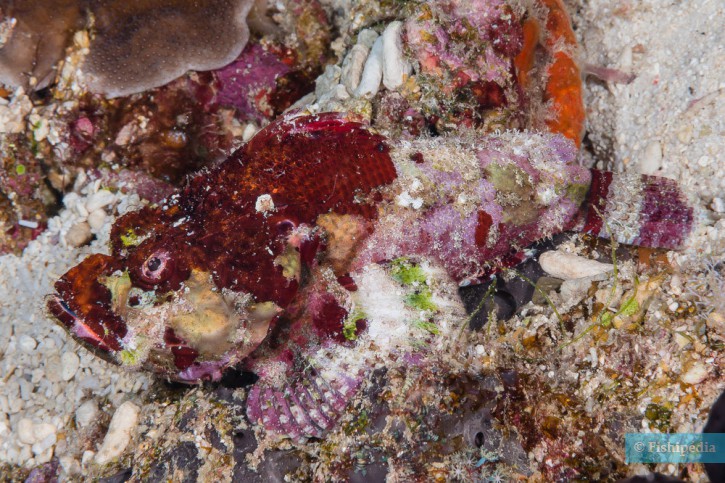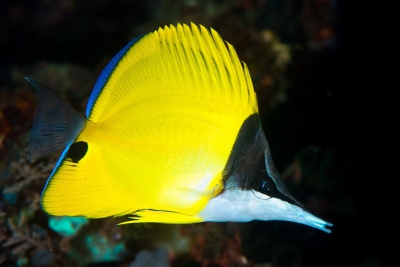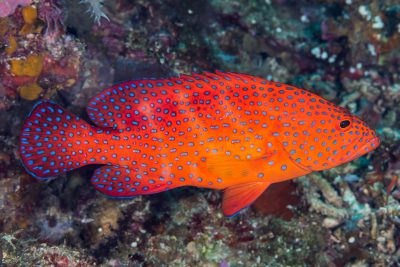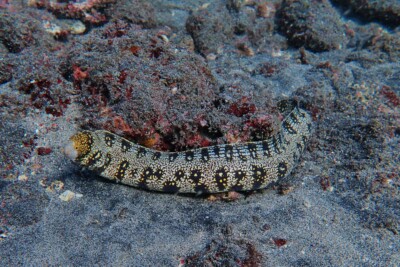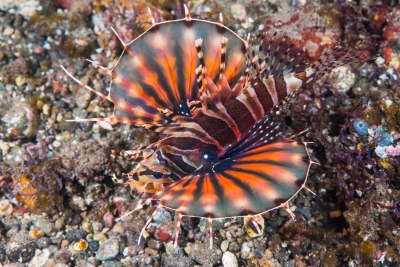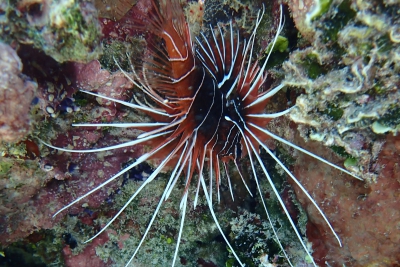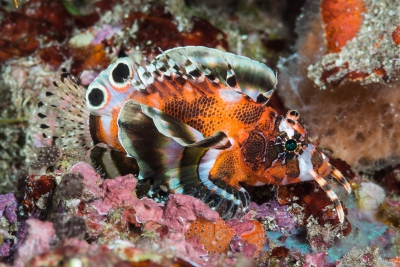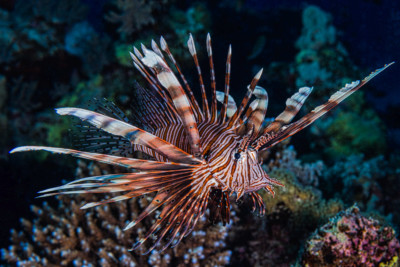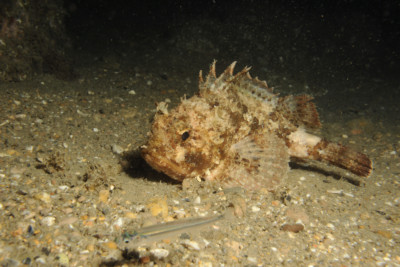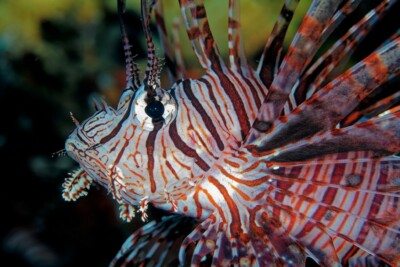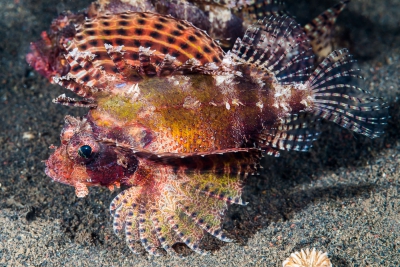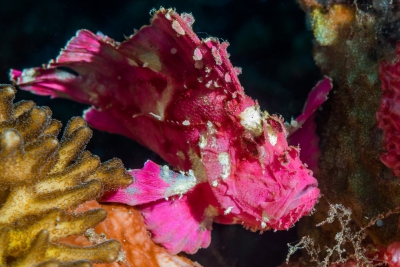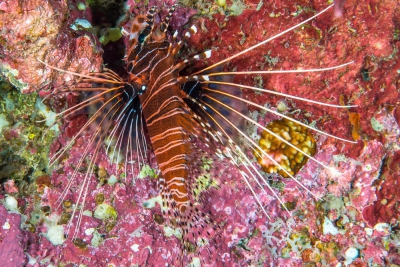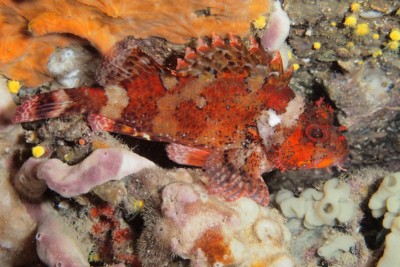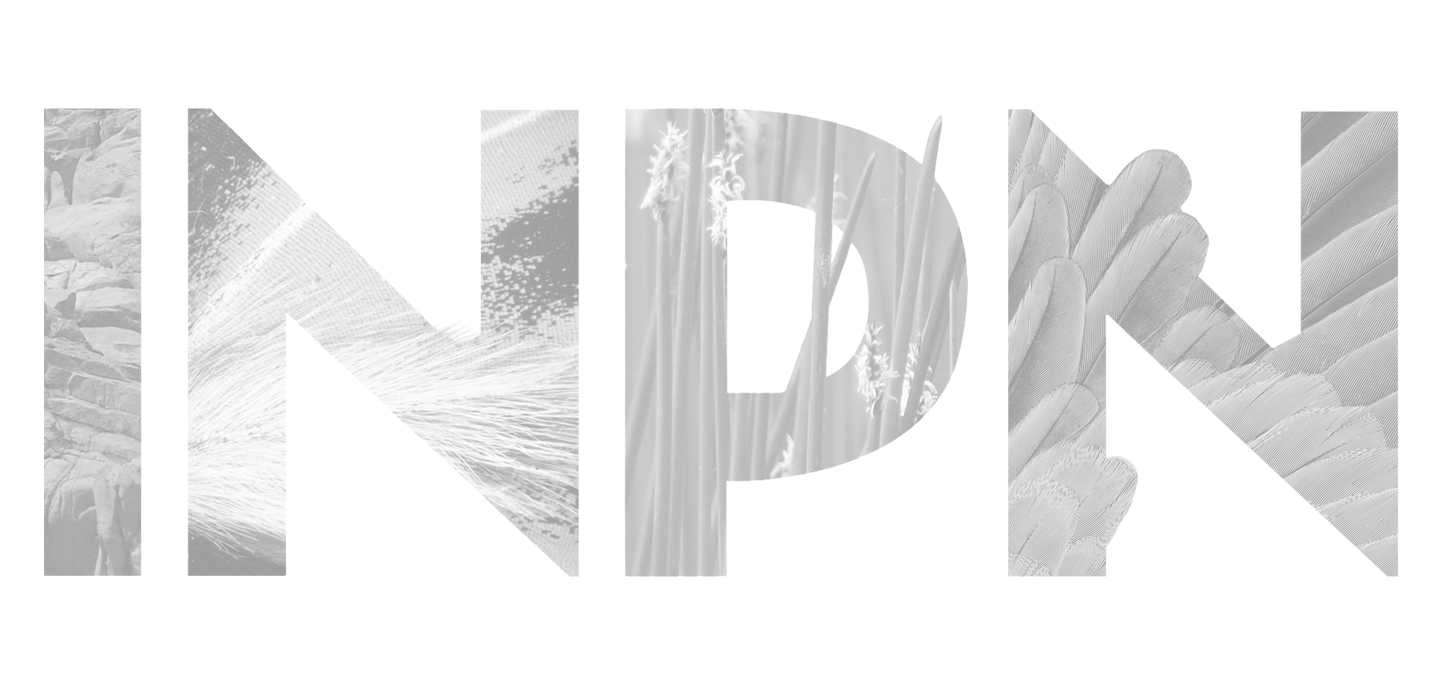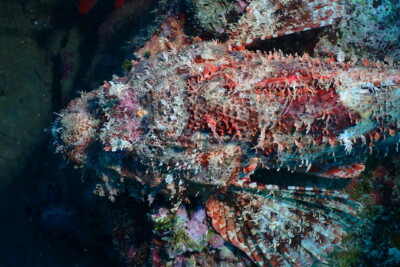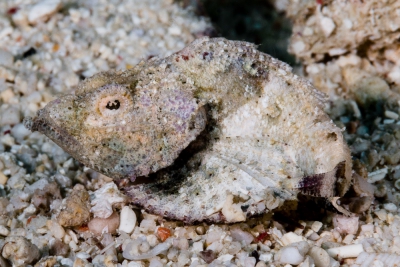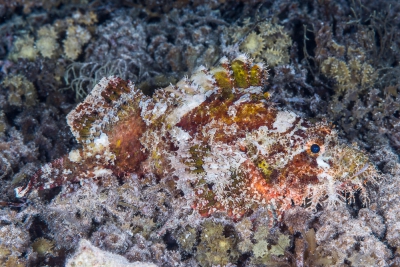false stonefish
| Family | Scorpaenidae |
|---|---|
| Genus | Scorpaenopsis |
| IUCN category (World) | LC |
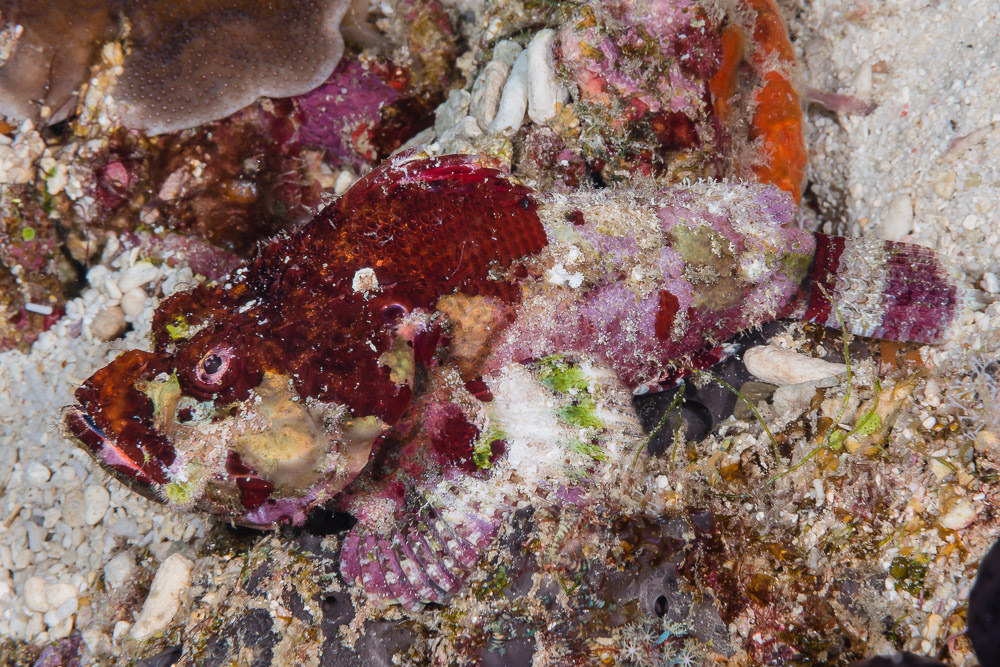

Introduction
The Scorpaenopsis diabolus is a tropical predator reminiscent of the behavior of false stonefish. It is found from the Red Sea to New Caledonia, and as far north as Japan.
Who is it?
Morphology
-
Type
-
Average size25 cm
-
Maximum size30 cm
-
ShapeUnclassifiable
-
Mimicrystone
-
Type
-
Average size25 cm
-
Maximum size30 cm
-
ShapeUnclassifiable
-
Mimicrystone
How to recognize This fish ?
The color of this fish varies depending on the substrate, but it is commonly seen in reddish tones with white to pinkish areas. It can also be orange, bluish, green, or even purple.
Its mouth is typical of ambushing predators, protractile and inclined upwards.
The caudal fin is striped white. It also has a shallow false eye under the front corner of the eye.
Sexual dimorphism
Dimorphism not specified.
Behaviour & Life cycle
-
dietcarnivorous
-
Sociabilityliving as a couple or alone
-
territorialYes
-
Way of livingnocturnal
The false stonefish resides on the seabed. It is a species that spends most of its time motionless, either partially buried in sand or camouflaged in rocky areas. It is a specialist predator in hunting fish.
When disturbed, this fish has the ability to make rapid movements with its pectoral fins. These "flashing" movements warn predators.
Reproduction
-
Reproductionovipare qui pond en eau libre
The false stonefish is an oviparous fish that lays eggs in open water.
Risks for humans
-
VenomousYes
This species is venomous and can cause serious injuries when touched.
Origin and distribution
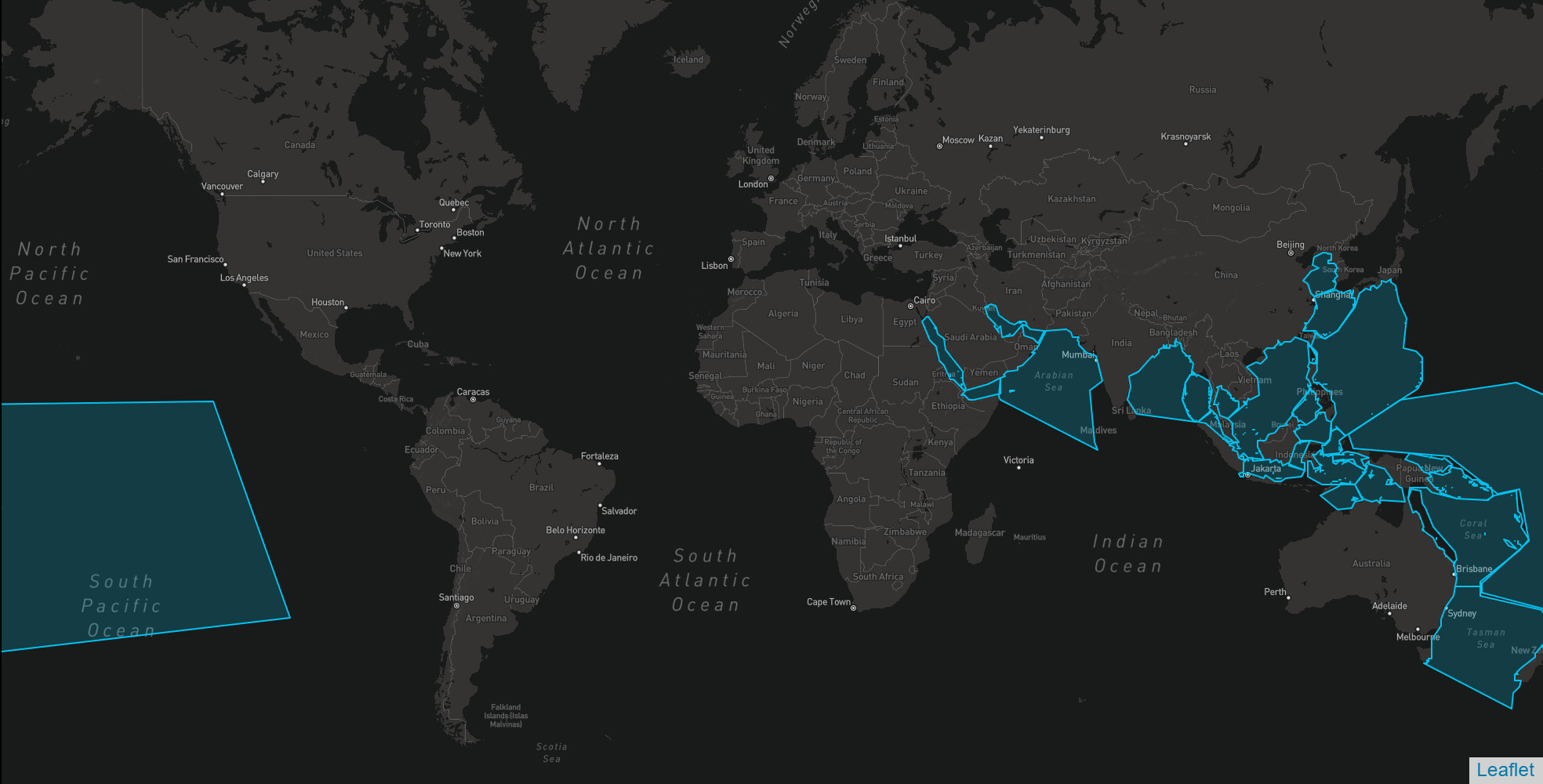
Conservation status of populations (IUCN)
What is its habitat?
Natural environment characteristics
-
Temperature22 - 26 °C
-
Depth1 - 70 m
-
FlowMedium, Slow and Stagnant
Biotope presentation
The false stonefish is most commonly found at depths of less than 70m. However, it is not impossible to find this fish at other depths.
This uncommon fish resides in rubble zones and rocky bottoms. It is sometimes found in reefs and lagoons.
Species of the same biotope
To go further
Sources & Contributions
Participation & Validation
The Fishipedia team and specialist contributors are committed to providing high-quality content. However, although the information comes from scientific sources or testimonials from specialists, the cards may contain inaccuracies.

Benoit Chartrer
Translation
Translation done with the valuable contribution of our translators, who make this information available to a wider audience. We sincerely thank them for their commitment.
Scientific partners
Tags
#Scorpaenidae
#Scorpaenopsis
#barrière de corail
#fonds sablonneux
#herbier
#lagon
#scorpionfish
#Bay of Bengal
#Persian Gulf
#Great Barrier Reef
#mer d'Oman
#Tasman Sea
#Philippine Sea
#Red Sea
#South East Asian Seas
#Indonesian seas
#Western Tropical Pacific Ocean
#Bali
#Mauritius
#Réunion
#Lombok
#Nusa Penida
Species of the same family
Same genus
Species of the same biotope
